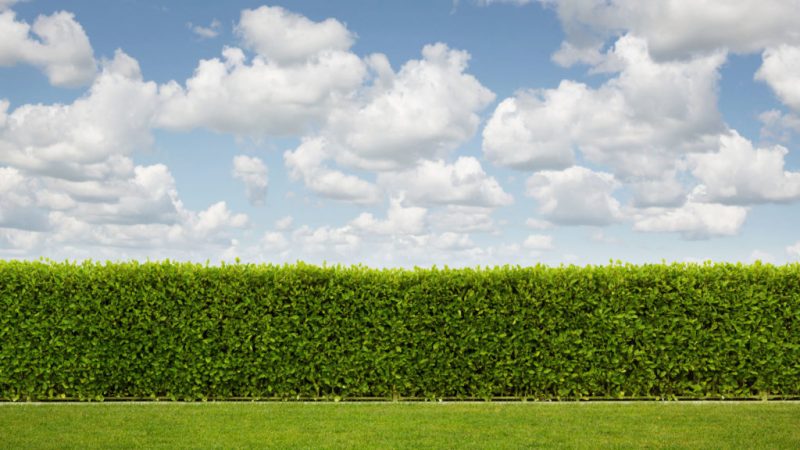
Make your neighbors disappear with privacy landscaping
When looking at homes for sale, how much is privacy worth to you? If you place a premium on not feeling like you live in a fishbowl, but can only afford to purchase a home in developments where the builder obviously tried to cram as many homes onto the parcel as possible, we may just have a solution for you: landscaping. Or, to be more precise, creative landscaping that assures privacy.
How much privacy do you want?
Before you can come up with a landscaping plan you’ll need to determine just how much solitude you want and need. The plan will be significantly more complicated and expensive if all four sides of the home need to be screened than if you only require something to block out the nosy neighbors behind the home.
Do you want the home completely shielded from view or is a lighter touch sufficient? Dense privet hedges will screen out most views while a combination of tall perennials and trees, or widely spaced trees will ensure privacy but with a softer silhouette.
Make the plan
Take measurements of the space you need to fill. Knowing the size of the space will help you choose the appropriate plants. Measure not only the length of the area but approximate height of your barrier.
Choose the right plants
American and Green Giant arborvitae (40 to 60 feet tall in maturity) are popular and will do the trick for those who need something tall, according to the National Arbor Day Foundation.
If something more shrub-like will suffice, consider two other arborvitae – Emerald and Nigra. The former grows to 15 feet in height while the latter may reach 30 feet tall. Both can be pruned to the height you desire.
Ensure that the tree, shrub or hedge that you purchase is evergreen or you’ll lose your privacy in the winter. If you prefer deciduous plants, the experts at Colorado State University suggest you choose those with lots of stems and branches to help provide a screen even after the plant loses its foliage. Rose of Sharon (Hibiscus syriacus) is one suggestion.
The eventual height and width of each plant is important, but so is its hardiness zone. Assure that what you choose is adapted to our area. Native plants are the ideal choice.
Landscaping narrow areas
Few homeowners feel comfortable being greeted by their neighbor’s face as they make their morning coffee. If the area between your house and the neighbor’s is narrow, fill it with quick-growing, columnar trees. Although Italian cypress (Cupressus sempervirens) remains slender, it will grow quickly (up to 3 feet per year) to be quite tall. Plant several, 5 to 6 feet apart, for a dense screen, or consider native vines with lattice, painted an attractive color, on which to climb.
Privacy for front and backyards
Typically, it’s the front and backyards that require blocking from prying eyes. And, since these spaces are larger than side yards, landscaping can be pricey. Consider using a mix of trees and shrubs with a few perennials thrown in for interest.
Blocking the bird’s eye view
Providing the privacy you crave is a bit trickier when the neighbor’s home looks down on yours. Consider planting trees with wide canopies, such as American hornbeam (Carpinus caroliniana) American chestnut (Castanea dentate), or Modesto ash (Fraxinus velutina). For year-round privacy, use latticework or an arbor and soften the lines with a vine.
Keeping it legal
If the home you’re considering buying, or the one in which you’re currently living is governed by a Homeowners Association, you’ll need to ensure that the privacy landscaping you want abides by the HOA rules. You’ll typically find landscaping rules in the CC&R section of the HOA documents.
Powered by WPeMatico




Recent Comments